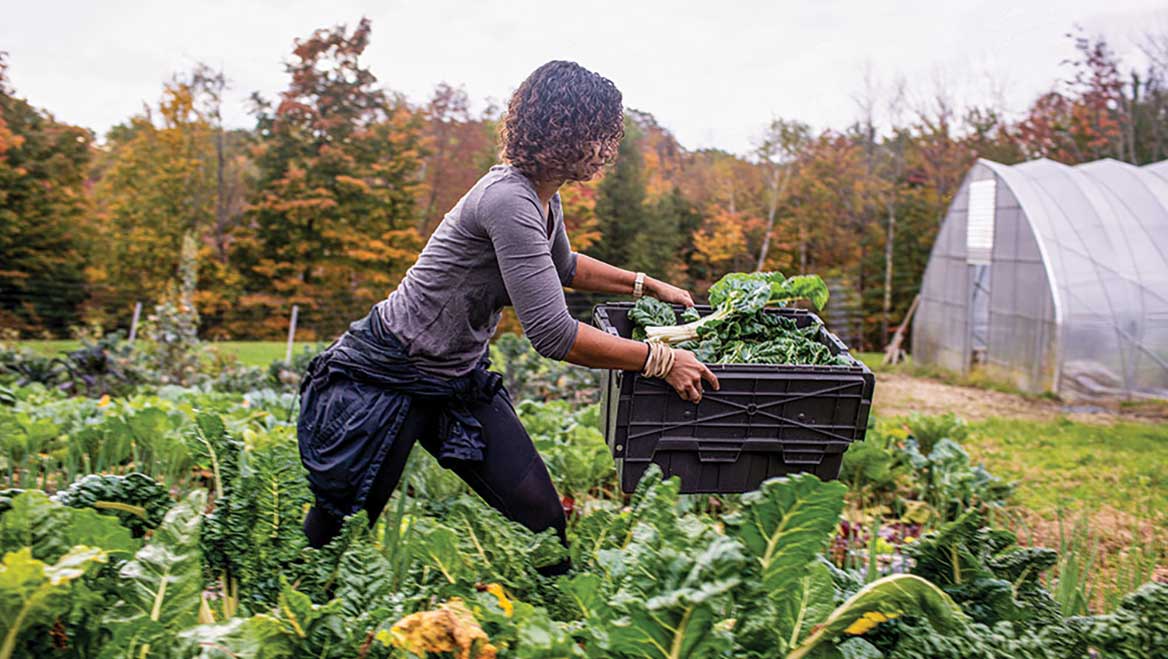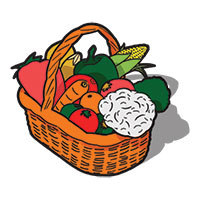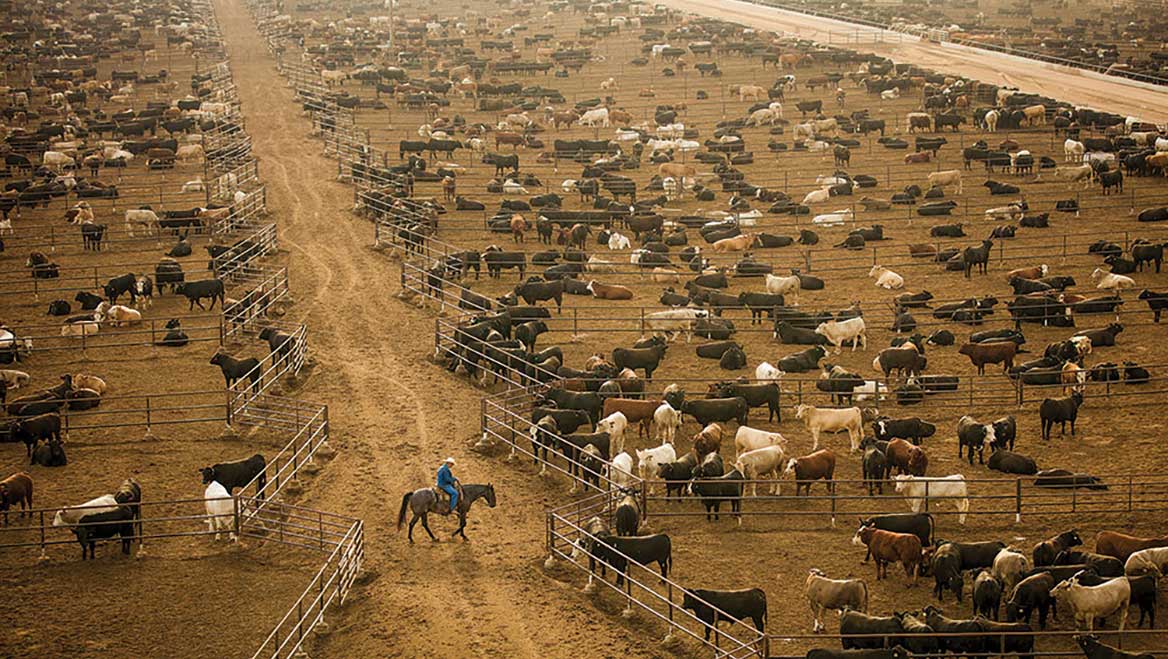Part of the Disruptors Series
Feb. 1, 2021
COVID-19 has laid bare, and in some cases exacerbated, many of the existing problems with food production and agriculture systems in the U.S. Ongoing trends of aging farmers, supply chain problems, climate change, and large-scale agriculture are putting food access, jobs and local economies, and the environment at risk.
Urban food systems enhance resilience, equity
To address these issues, some urban areas are gravitating toward more sustainable local and regional food systems. This shift can help local governments accomplish a multitude of goals, including resilience, economic development, job creation, food sovereignty, reduced greenhouse gas emissions, and better water management.
Some food systems experts say improvements and a growing interest in urban agriculture technology such as vertical farms and hydroponics have the potential to help local communities in the U.S. move the needle further.
But to achieve these benefits, planners and urban and rural governments alike will need to build political will among decision makers and the public. They also must shift use of municipal resources and adopt policy and regulation changes that support and encourage local and regional food systems, including urban agriculture and community-supported agriculture and food business models.
"Local and regional food systems are critical aspects of healthy, resilient, and equitable communities. Planners have important roles to play as conveners and advocates for advancing policies that shift the food system toward this model," says Andrea Petzel, AICP, chair of APA's Food Systems Division.

Soul Fire Farm is an Afro-Indigenous centered community farm committed to ending what food justice advocates call "food apartheid." Its food sovereignty programs reach more than 10,000 people a year and include training for farmers of color, urban home gardens, and produce delivery for food-insecure households. Photo by Brian Dawson/The New York Times.
Food Desert to Food Justice
Grafton, New York
The term "food desert" went mainstream in 2010 when the Obama administration launched its Healthy Food Financing Initiative to encourage retailers to operate supermarkets in low-income areas to increase access to fresh food. But food justice activists like Karen Washington, who sits on the board of the 80-acre community Soul Fire Farm in Grafton, New York, are increasingly using "food apartheid" instead. They say food deserts are not naturally occurring phenomenon, but rather the result of system-level policies like redlining and the lack of grocery stores or transportation options that make it hard for people in certain zip codes to access healthy food. The growing food justice movement seeks to address these underlying inequities by shifting the power and wealth in food production from major corporations back into the hands of local communities to benefit both small food organizations and the greater good.

The ongoing trends of urban agriculture and food justice will continue to require shifts in municipal resource use, as well as adoption of community-supported agriculture models.
Immigrant Business Incubator
Tukwila, Washington
As communities look for ways to strengthen local food systems and boost their economies, some are turning to food-based business incubators like community kitchens. According to the municipal action guide from the National League of Cities Food-Based Business Incubator Programs, these types of services typically include access to shared space and equipment, education, and business assistance to help remove barriers for first-time food entrepreneurs to get their businesses off the ground. Food business incubators can also help local governments and economic development organizations create more equitable access to entrepreneurship.
That's the case with Spice Bridge, home to nonprofit Food Innovation Network's food business incubator program, which helps women of color and immigrants in South King County, Washington, start and grow thriving businesses.

The Vegetable Co. in Kuala Lumpur grows vegetables vertically under LED lights in a 320-foot shipping container on the edge of a parking lot. They are one of a growing number of small farms around the world selling, and in their case delivering, directly to local consumers. Photo by Ian Teh/The New York Times.
Vertical Farm in a Box
Kuala Lumpur, Malaysia
By 2050, experts predict the world's population will increase to 10 billion (from today's 7.6 billion); two-thirds of those people will live in cities. Since farmable land is a limited resource, food producers in the U.S. and abroad are turning to technology to sustainably boost yields to keep up with demand.
Innovations such as vertical and modular farms, such as those used by The Vegetable Co. in Kuala Lumpur, Malaysia, and parent company Future Farms, and hydroponics (growing plants in a nutrient solution and water instead of soil) allow growers to squeeze acres of production out of spaces measured in square feet. These compact — and sometimes portable — growing spaces mean farmers can viably grow food closer to their urban consumers year-round. The controlled growing environments also have measurably lower environmental impacts, using precise amounts of water, UV light, and in some cases even solar power.

Livestock operations are responsible for more than seven percent of U.S. greenhouse gas emissions, according to the National Center for Environmental Health. CAFOs can produce more waste than some U.S. cities, and they store excess manure in lagoons or pits, where it breaks down anaerobically (without oxygen), which exacerbates methane production. The U.S. cattle industry is one of the primary producers of methane. Photo by George Steinmetz/The New York Times.
Climate Effects of Large-Scale Farming
Tulia, Texas
Industrial agriculture is the dominant food production system in the U.S. Characterized by large-scale, intensive production of a few crops and animals, such operations use significant amounts of chemical fertilizers and produce meat in confined animal feeding operations (CAFOs). While they account for just 4.8 percent of farms in the U.S., they produce 58.3 percent of the nation's food, according to the University of Michigan's Center for Sustainable Systems.
Facing a growing population, the consolidation and scaling of food and agriculture systems in the U.S. — and around the world — initially made sense. But some experts say it has significant downsides. "Food systems are sort of the dark horse of climate change," Jason Hill, professor at the University of Minnesota, recently told the New York Times. Hill is the senior author of new research published in the journal Science that shows reducing greenhouse gas emissions from food is crucial in the fight against climate change.
The emissions come at multiple points before food even makes it to consumers: production, including use of fertilizers; food digestion by livestock; and food processing, packaging, and pre-retail transportation. Together those sources account for 58 percent of the total energy used by the U.S. food system, according to the State of Oregon Department of Environmental Quality. Food systems and environmental advocates say smaller farming operations and increased distribution and marketing of unprocessed, locally produced food is a viable way to address these concerns.




